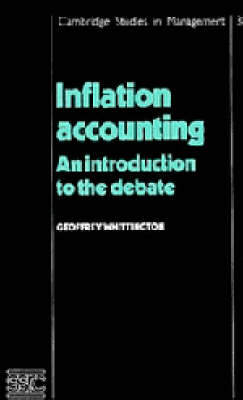Cambridge Studies in Management
2 total works
This book provides a clear and concise summary of the present state of the theory of inflation accounting for students and practitioners. It describes all of the main alternative methods of inflation accounting and illustrates them, using simple numerical examples. The theoretical and practical aspects of each method are discussed, in order to give the reader the framework within which he can evaluate the relative merits of the various practical solutions to the inflation accounting problem which are now being implemented in the UK, USA and elsewhere throughout the English-speaking world. The emphasis throughout is on a comparison of the relative merits of alternative systems, rather than aiming to give a single 'best' solution. Indeed the latter aim is seen as most probably illusory, because different types of accounting information may be needed for different purposes.
The Debate on Inflation Accounting
by David P. Tweedie and Geoffrey Whittington
Published 1 November 1984
First published in 1984, this book gives a historical account of the worldwide development of the theory and practice of inflation accounting (particularly as applied to the financial accounts of corporations). It is a comprehensive account, both in terms of the historical depth and the international breadth of its coverage. The account of the debate in Britain includes the results of original research by the authors, based on interviews and archive material. The book offers important insights not only into the present state and likely future course of the debate on inflation accounting but also into the whole process of setting financial accounting standards. The exposition is kept at a non-technical level wherever possible, but the reader should ideally have the degree of technical expertise which could be acquired by reading the companion volume, Inflation Accounting: an introduction to the debate, by Geoffrey Whittington.

